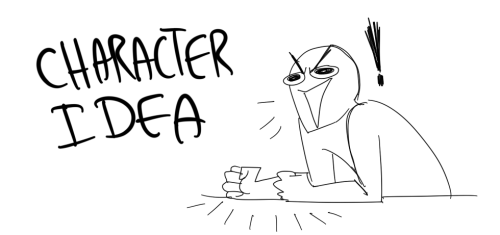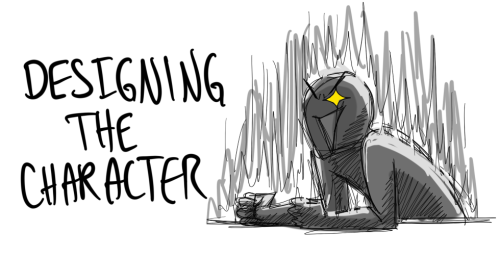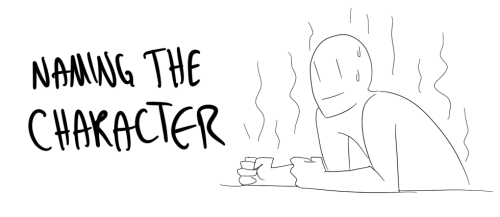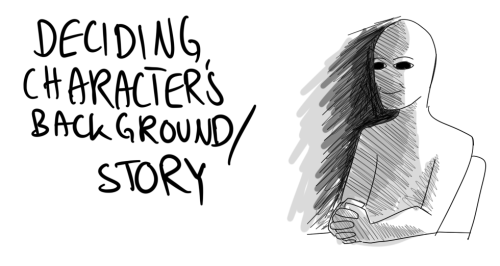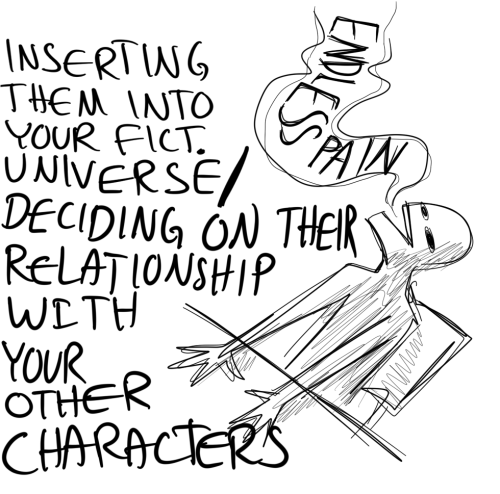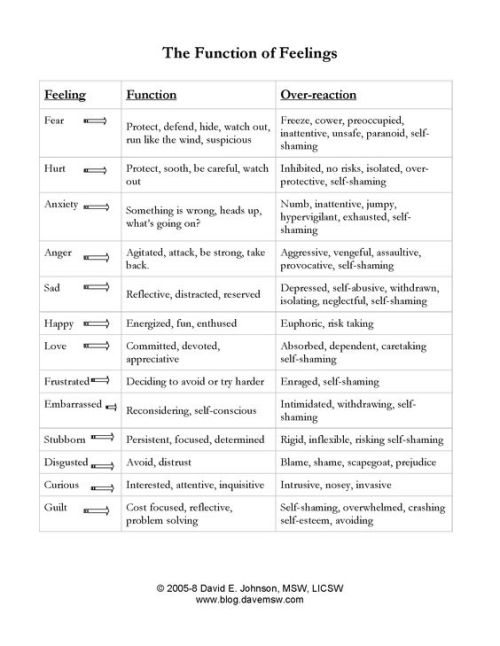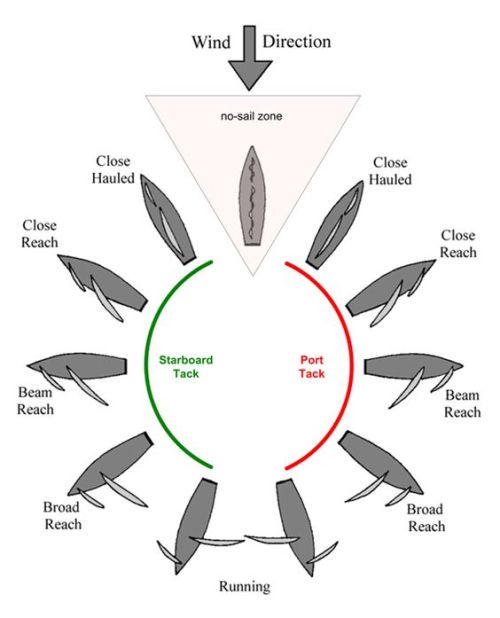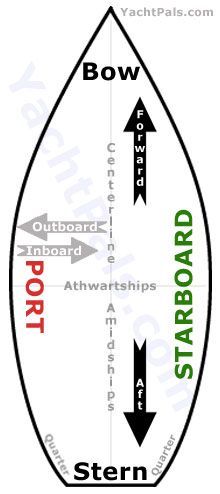Writing Tips - Blog Posts
i unironically believe electricity is the closest thing we have to magic in this universe. consider:
it's basically what human "souls" are made of (your consciousness is the result of miniscule amounts of electric charge jumping between neurons in your brain)
when handled incorrectly or encountered in the wild, it is a deadly force that can kill you in at least half a dozen different ways
when treated respectfully and channeled into the proper conduits, it is a power source that forms the backbone of modern society
if you engrave the right sigils into a rock and channel electricity into it, you can make the rock think
there is a dedicated caste of mages (electrical engineers) tasked with researching it in ivory towers
whatever the fuck Galvani was doing with those frog legs
look at this and just try to tell me it isn't a kind of summoning circle

If any advice post makes you feel you need to overhaul your whole wip and examine every inch for "problems"...step back and analyze the advice instead. It may not apply to you, it may be taking a small issue and making it big, or it may be entirely wrong.
Subplots 101
Subplots are an essential part of storytelling that can add depth and complexity to your book's overall narrative. This post covers a step-by-step guide to making subplots, general tips, and some examples of subplots in YA books.
Step-by-step guide to making a new subplot
Identify a secondary character
Consider a secondary character in your story who is not directly involved in the main plot. This could be a friend or family member of the protagonist, or a peripheral character who has a unique perspective on the world of the story.
Create a conflict
Think about a conflict or challenge that this character could face, which could be related to their personal life or a separate issue in the story. This conflict should be something that the character needs to overcome or resolve.
Connect the subplot to the main plot
Consider how this subplot could connect to the main plot. This could involve having the main character help the secondary character with their conflict, or having the subplot reveal important information that impacts the main plot.
Develop the subplot
Once you have established the groundwork for the subplot, develop it in detail, including the character's motivations, the obstacles they face, and the resolution to the conflict.
General tips for a good subplot:
Make sure your subplots are related to the main plot
Subplots should be tied to the main plot in some way, either by affecting the main character or providing additional context for the story.
Develop separate character arcs
Your subplots should have their own character arcs that tie in with the main character's arc. This allows for additional character development and can help create a more immersive world.
Use subplots to reveal new information
Subplots can be a great way to reveal new information about the world or characters that might not be relevant to the main plot. This can help make the world feel more alive and fleshed out.
Keep subplots contained
Subplots should not take over the main plot. They should be contained and serve to enhance the main plot rather than distract from it.
Examples of subplots:
Harry Potter and the Goblet of Fire by J.K. Rowling
Harry and Draco's rivalry
Hermione's fight for the rights of house-elves
the mystery surrounding the Death Eaters.
The Hunger Games by Suzanne Collins
The main plot of The Hunger Games is Katniss's fight to survive in the games. However, there are several subplots that tie into the main plot, such as her complicated relationship with Peeta and her struggle to reconcile her feelings for him with her need to survive.
Remember, subplots should enhance and support the main plot of your story, adding depth and complexity to the overall narrative. I'd recommend having 2-3 subplots of varying depth, depending on how important they are to the story, but obviously that's entirely up to you.
How to create internal conflict in your characters
Developing internal conflict in book characters is essential to creating well-rounded and compelling characters that readers can relate to and empathize with. Here are some tips to help you create internal conflict in your book characters:
Give your characters a goal
Every character needs a goal, and their internal conflict should stem from the obstacles they face while trying to achieve that goal. When a character has a clear goal, it helps to create tension and conflict within themselves.
Create a backstory
A character's backstory can be a powerful tool in creating internal conflict. Explore their past experiences and how they have shaped the character's current beliefs and values. This can help to create internal conflict by highlighting contradictions or inconsistencies in the character's beliefs or behaviors.
Use a character's flaws
A character's flaws can create internal conflict by causing them to question their own judgment or struggle with their sense of self-worth. Consider giving your characters a flaw or two, and show how these flaws cause them to make mistakes or struggle with their decisions.
Show conflicting emotions
A character can experience conflicting emotions, such as feeling both love and hate towards another character, or wanting to do what is right but being held back by fear. By showing these conflicting emotions, you can create internal conflict within the character.
Use external events
External events can also create internal conflict in characters. For example, a character who has always believed in following the rules may be forced to break them to save someone they love. This can create an internal conflict within the character as they struggle with the consequences of their actions.
By using these techniques, you can create complex and engaging characters that readers will be invested in. Remember that internal conflict can be just as important as external conflict in creating a compelling story. And as always, our tips are just suggestions! Hope this helps you with your writing :)
Color synonyms cheat-sheet
Here’s my ultimate list of synonyms for every colour that you can use in your descriptive writing! Save this post to find them easy later.
Red
scarlet
vermillion
ruby
blood
wine
cerise
crimson
cherry
maroon
coral
rust
sanguine
blush
burgundy
Blue
azure
cobalt
sapphire
cerulean
marine
navy
indigo
teal
denim
ocean
lapis
sky
turquoise
Yellow
amber
gold
lemon
sand
saffron
ivory
dandelion
honey
butterscotch
mustard
canary
flaxen
maize
Green
olive
emerald
grassy
verdant
sage
lime
pine
juniper
chartreuse
seafoam
moss
fern
jade
forest
Black
jet
obsidian
onyx
raven
charcoal
ink
shadowed
dark
midnight
grease
void
White
pearl
alabaster
egg shell
cotton
snow
ivory
frost
bone
powder
light
chiffon
cream
ashen
Orange
amber
tangerine
marigold
clay
apricot
peach
sandstone
honey
bronze
fire
ochre
titian
auburn
Purple & Pink
lavender
plum
lilac
violet
magenta
mauve
orchid
blush
fuschia
salmon
grape
mulberry
periwinkle
iris
Brown
chestnut
hazel
ginger
sepia
mahogany
cedar
cinnamon
beige
bronze
auburn
coffee
walnut
wood
umber
tawny
How different is your second draft from the third draft?
Not much. First to second there's often proper construction work. Second to third draft we're in the territory of "I showed the mss to some friends and I need to fix that thing Janice didn't get in Chapter 5, and the goof that Bill pointed out in Chapter 7 and I probably need to write a new beginning to Chapter 11 because I'm confusing absolutely everyone...."

And a disaster for the discussion of non-anime TV shows in fandom.
"Cool-down episodes" aren't filler.
The Emotion Thesaurus: Amazement
Hello everyone! This post will discuss the emotion amazement.
This section is taken from the Emotion Thesaurus by Angela Ackerman and Becca Puglisi.
Amazement
Definition: overwhelming astonishment or wonder
Physical Signals:
widening of the eyes
a slack mouth
becoming suddenly still
sucking in a quick breath
a hand covering one's mouth
stiffening posture
giving a small yelp
rapid blinking followed by open staring
flinching or starting, the body jumping slightly
taking a step back
a slow, disbelieving shake of the head
voicing wonder: I can't believe it! or Look at that!
pulling out a cell phone to record the event
glancing to see if others are experiencing the same thing
pressing a hand to one's chest, fingers splayed out
leaning in
moving closer
reaching out or touching
eyebrows raising
lips parting
a wide smile
spontaneous laughter
pressing palms to cheeks
fanning oneself
repeating the same things over and over
squealing dramatically
Internal Sensations:
a heart that seems to freeze, then pound
rushing blood
rising body tempreture
tingling skin
stalled breaths
adrenaline spikes
Mental Responses:
momentarily forgetting all else
wanting to share the experience with others
giddiness
disorientation
euphoria
an inability to find words
Cues of Acture of Long-Term Amazement:
a racing heartbeat
shortness of breath
knees going weak
feeling overwhelmed as if the room is closing in
collapsing
May Escalate To: Curiosity, Disbelief, Excitement
Cues of Suppressed Amazement:
holding oneself tightly (self-hugging)
walking in jerky, self-contained strides
clamping the hands to the chest
looking down or away to hide one's expression
eyes widening a bit before control is asserted
mouth snapping shut
a stony expression
taking a seat to hide emotion
making excuses if reaction is noticed
stuttering, stammering
How to keep making ttrpgs? I just made my first one+ a couple game jam entries and i feel like i hit a rock , all i have is a vague idea, what do i do?
aw well i'm so happy you made a bunch of games and want to keep making them!
there are multiple answers to this, but mine is: take a break! i had on-and-off ttrpg burnout last year, and forcing it never helps. so i used that burnout time to get into a new hobby i've been meaning to try for forever: fighting games! now i go back and forth between writing my games and getting better at guilty gear! i'm even trying to learn a new type of controller?? it's real fun. on top of that, seeing other types of game formats is a great way to get new ideas!
and some days i just chill with my partner and my pet reptiles. REST is so important. not as a way to work more in the future, but just for its own sake.
the ttrpg design flow will be back soon enough. after HEXFALL and Caltrop Core, i was like 'idk what other kind of games i wanna make. have i done everything i can do here?' but sure enough, i got the idea for EMERGE8, an entirely new SRD, then got the idea for TANK!, Decadent Salvo, and more.
tl;dr don't force it. take a break and your brain will be itching to give you fresh new ideas soon enough!
Plots
What is a plot?
A plot is the chain of events that make up the story in a book, movie, TV show, and the like. A plot generally consists of five major points: Exposition, Rising Action, Climax, Falling Action, and Resolution/ Denouement.
Exposition:
This is the beginning of the story. Here, the reader is introduced to the setting, the characters, and the main conflict.
Rising Action:
This is where the story starts to get complicated. The conflict begins to escalate to a much bigger issue.
Climax:
This is the middle of the story. The characters may be panicking, as the conflict has reached its peak.
Falling Action:
By this point of the book, the characters may have thought of a solution to the issue and are implementing it. The story begins to cool down.
Resolution/Denouement:
This is the end of the story. The story is at a stopping point, the main issue resolved. If you’re writing a series, this may be where you would add the extra bit of information that leads into the next book.
What is a subplot?
A subplot is a plot that exists inside the main plot. An example being a group of characters working together to reach a concrete goal, but romantic tension existing between the two main characters at the same time - the subplot.
These are the only two I felt needed some clarification. If you have any questions, or feel as though I’ve missed something, feel free to let me know!
Characters Types
Protagonist:
The Protagonist is the main character of your story. They are the most mentioned, the one who drives the plot, the one the readers will be paying most of their attention to. Generally, there is only one, but there can be more than one protagonist in a story.
Antagonist:
The Antagonist is the character that goes against the Protagonist. An Antagonist doesn’t have to be a person, necessarily. It can be a group of people, society, nature, et cetera. They don’t even have to be evil, they just need to go against the Protagonist’s motives.
Villain:
Both the Villain and the Antagonist are opponents of the Protagonist. Though, the main difference is the Villain has bad intentions. They are evil.
Dynamic Character:
A Dynamic Character is the person who undergoes a change throughout the story, whether it be good or bad. The character’s motives or morals are different than they were in the beginning. The change is normally permanent.
Flat or Static Character:
A Flat or Static Character is the opposite of a Dynamic Character, hardly experiencing any changes throughout the story, if at all. Generally, the reader doesn’t know much about this character.
If you have any questions regarding character types, or feel as though I’ve missed something, feel free to let me know!
Character Traits
An interesting trick I learned from scrolling through my Instagram feed (instead of writing) is to focus on the extremes of your character - the two ends on a character’s personality spectrum.
Take a perfectionist, for example. This person strives to be perfect all of the time, therefore, they work extremely hard. However, this person is so obsessed with being perfect that they can come off as condescending or controlling.
A character’s personality traits also depend heavily on the viewpoint at which you’re looking. Take an abusive parent. When the parent is at work, all of their co-workers may see them as a caring, respectful, and friendly person. To their child, they’re seen as uncivilized and a monster.
I’m not saying you have to use the “extremes” concept on every character. In fact, assigning only negative traits helps the reader identify who the antagonist (or villain) may be. However, giving a character both positive and negative traits helps humanize the character.
If you have any questions regarding character traits, or feel as though I’ve missed something, feel free to let me know!
Top Ten Tips for Beginner Writers
Understand
Writing is amazing. It is so satisfying to be able to hold your success, to see your success, to know your hard work paid off. On the opposing side, writing can be a pain. As unfair as it may seem, to succeed, you need to fail. Truthfully, writing is more than putting words on a page. In order to be a successful writer, you need to understand that.
Writer Friends
No one will understand a writer's mind better than a writer. Of course, every writer is different. Even so, they have been/are where you are. They will assist you in growing as a writer, probably better than any English teacher ever could.
First drafts
Think of a building. Obviously, you build from the floor upward. Essentially, your first draft is the foundation of your story - something to build upon. That being said, your first draft is not the story as the floor is not the building.
Keep Writing
As previously stated, in order to succeed, you need to fail. If you aspire to be a successful writer, you need to also understand that it is not the fact you fail, but whether you rise despite the failure. Furthermore, if you wish to improve, you need to continue writing beyond your mistakes.
Originality
Originality is not mandatory. If your plot derives from an AU, writing prompt, or already exists (a book or movie having the same general plot), your story does not lose its value. Some of the best stories exist more than once.
Yes, it counts.
If you post on Fanfiction, you are a writer. If you post on Wattpad, you are a writer. If you write, you are a writer. Your work is valid, no matter what you decide to do with it.
Writing Journals
There will come a time when the perfect idea hits you and you don't have access to a device. Sure, we operate digitally. Even so, invest in a journal. You’ll never know when you might need it.
Reading Books
Reading action packed books helps me understand how to effectively shift between a scene/moment in a chapter. Even if you’re not much of a reader, rest assured the techniques you wish to master are hidden in pages for you to observe.
Taking Advice (the irony is strong)
You will stumble upon posts instructing you on what to use in a sentence, what not to use, how to express emotion, et cetera. Keep in mind that not all of it will apply to you. Use the word “very” if you want to, end a sentence with a preposition if you would like, don’t name your chapters if you don’t feel like it. You are in charge of your story.
Taking Breaks
It is okay to take an hour break, or a week-long break, or even a three-month break. It does not make you any less of a writer. Do whatever you need to do to become the writer you aspire to be, even if that means not writing for a while.
If you have any questions, or feel I missed something, feel free to let me know!
How to Write a CHARMING Villain
Everyone loves a good villain, and they especially love a charming one. If you want to write an antagonist who's both evil yet irresistible, look no further!
1. Show Their "Kindness"
Kindness? Wait, I thought you said we're writing a villain today.
Yup, I mean it--make your antagonist appear kind. Realistically, someone who's polite and friendly is often considered more attractive than someone who's rude and judgmental, so make them kind. It doesn't have to be honest kindness, but you want your readers to doubt the malevolence of your character, if that makes sense.
You can show this kindness through small, daily actions; they don't have to have a lot of impact on the story. Something simple like leaving a big tip, granting a minion a vacation, letting someone go first in the line, and holding open the door all contribute to this image.
2. Smooth Talker
Effective communication is everything. If your villain is eloquent, they seem more capable and intelligent! However, if you're looking to expand further, explore what they can do with their speech.
Does everyone pay attention when they start speaking? Are they able to calmly resolve conflicts verbally? Are they really persuasive? Do they speak elegantly?
Show the effects of their communication skills!
3. Good leader
Make them a good leader. Make them consider how their subordinates might feel. Make them choose good decisions. Perhaps they give their workers days off when they need it. Perhaps they engage with their followers often. Perhaps they're more down-to-earth.
A solid leader looks respectable while a poor one looks ridiculous.
4. Intelligent + Logic
I say this all the time, but make your villains smart, make them logical, make your readers understand where they're coming from. Some of the best antagonists I've ever seen are not the ones that seem excessively evil or unhinged, but rather the ones that seem logical in their actions. And knowing that they're well-aware of their actions and the consequences makes things that much scarier.
if you want a charming villain, you have to start with someone who is competent.
5. Conflicting Moments
At the end of the day, your character is still the antagonist. Yes, they might appear kind, but that's not going to last forever. There will be times when they act unnecessary cruel, and that's okay.
Your audience might be unsettled and confused from the whiplash, and that's okay. Don't force your character into being someone else to satisfy the readers. Embrace the difference.
6. Backstory
Backstories matter for all different types of reasons. From establishing the basis to one's goals, morals, and values to providing the foundation for their character, an effective backstory can do a lot.
However, I want to specifically talk about how the backstory demonstrates someone overcoming their obstacles. If they made it to the present, then they really defied all odds to be here, and honestly? That's admirable (and attractive), no matter what kind of person they turn out to be.
Now, if you're thinking "what if I don't give the antagonist a painful backstory?", I'll address that real quick. You don't have to give them a super depressing past, but there will always be pain and hurt in their past, even if it isn't something "lifechanging" or there 24/7. There is no such thing as a perfect, happy past.
CONCLUSION
To quickly conclude, a charming villain is often not one who appears visibly evil, but one who appears compassionate, intelligent, well-spoken, and acts like a good leader.
Happy writing~
3hks :)

Types of Character Arcs
Just like there are various flavours of ice cream to satisfy our taste buds, there are different types of character arcs to captivate readers’ imaginations.
Transformational Arc: A character undergoes a profound transformation throughout the story. This transformational arc takes them on a journey of personal growth, where they evolve, learn from their experiences, and undergo significant change. Think Frodo Baggins from The Lord of the Rings, who starts as an ordinary hobbit and becomes a heroic figure, or Cinderella, who goes from being a mistreated servant to a princess.
Flat or Static Arc: Not all character arcs involve drastic change or growth. In a flat or static arc, the character remains relatively unchanged throughout the story. Instead of personal transformation, these characters serve as a stabilizing force or a moral compass within the narrative. They maintain their core values, beliefs, or traits, providing stability and guidance for others. Sherlock Holmes is a prime example of a character with a flat arc. His brilliant deductive reasoning and logical nature remain consistent, while the world around him evolves.
Positive Change Arc: In a positive change arc, a character starts with flaws, struggles, or a particular mindset, but over the course of the story, they experience personal growth and positive transformation. They learn valuable lessons, overcome obstacles, and develop into a better version of themselves. This arc is often associated with themes of redemption, self-discovery, and the triumph of the human spirit. Characters like Ebenezer Scrooge from A Christmas Carol or Katniss Everdeen from The Hunger Games exemplify positive change arcs.
Negative Change Arc: Contrasting the positive change arc, the negative change arc delves into the descent or downfall of a character. It explores the moral decline, corruption, or internal conflicts that lead the character astray. This arc can be dark and intense, showcasing the destructive power of choices or external influences. Characters like Macbeth from Shakespeare’s play or Anakin Skywalker in Star Wars demonstrate the negative change arc. 💻✨ Discover how the transformative journeys of character arcs breathe life into your stories, and captivate the hearts and minds of your readers. You can read the full post in the Reading Room at the link above.
Sparking Chemistry Between Characters #1
⇢ Emotional Timing ( When One Opens Up and the Other Isn’t Ready, Yet)
There’s something so devastatingly real about when characters miss each other, not physically, but emotionally. One’s finally ready to be honest, to be seen… and the other? Still hiding. Still pretending. That emotional dissonance creates a whole different kind of electricity: one rooted in vulnerability, silence, and the ache of almost.
“I trust you,” she said, voice low, eyes steady. He looked at her, and for a second, he almost said it back. But then his smile cracked, soft and sad, and he looked away like the words were burning holes in his throat.
This isn’t the moment they fall into each other’s arms. This is the moment they could have. And those moments still haunt.
Use this when:
You want slow burn that hurts a little
Your characters are stubborn, scared, or emotionally constipated (bless them)
The closeness builds from not-quite-connecting, until one of them finally breaks
⇢ Silent Support ( When They Don’t Say It, But They Show It)
Sometimes the most romantic thing a character can do is just… be there. No speeches. No dramatic gestures. Just showing up, quiet, consistent, unwavering. The kind of person who notices when your laugh sounds tired.
He didn’t say anything when he found her curled up on the kitchen floor. He just sat next to her, their shoulders barely touching, and slid his hoodie off without a word. A minute later, she was wearing it. Five minutes later, she was breathing again.
This isn’t about grand declarations. It’s about the kind of love that doesn’t demand to be acknowledged. The kind that waits. That steadies. That speaks fluent silence.
Use this when:
You want to show love without “I love you”
You’re building intimacy through actions, not words
Your characters aren’t the touchy-feely, talk-it-out types
⇢ Emotional Whiplash (When Conflict Turns Intimate Too Fast)
This is the classic “We were fighting five seconds ago and now I want to kiss you” moment. Because nothing stirs up feelings like frustration mixed with closeness. When characters clash, especially if there’s emotional history or denial involved, it creates heat. They’re already fired up. Already in each other’s space. Now throw in a little vulnerability and BAM, you’ve got magnetic chaos.
“Why do you care what I do?” she snapped, stepping closer. “Because I...” He bit the word back, jaw tight. His fists clenched at his sides. She stared, breath caught in her throat. “Because I do,” he said finally, quieter this time. “More than I should.”
Enemies to lovers. Friends to what even are we. That line-blurring, heart-pounding tension where the air is thick and the truth almost slips out, that’s where this trope lives (I Love It).
Use this when:
You want chaos, angst, and chemistry all at once
Your characters are in denial and one good argument away from kissing
You want something to break open and then immediately regret it
Types of intelligence for your OCs
What kind of intelligence does your character posses? Based on theory of multiple intelligences, these are some ideas what kind of smarts your characters might posses that aren’t the typical academic or street smarts.
1. Visual-spatial (space smart)
These people are good at visualizing things, seeing in 3D, being able to imagine how things look even out of sight from the information they have about it. They are good with directions, maps, charts and pictures. Eye for drawing, patterns and puzzles.
Especially useful for: architects, engineers, artists, pilots
2. Linguistic-verbal (word smart)
The ability to use words well, when writing and speaking. Typical strenghts are telling stories, memorizing information, love for reading, skill with words, debating and persuasive skills, adept at explaining complicated subjects. Also tend to be great at languages.
Especially useful for: writers, journalists, lawyers, teachers, public speakers
3. Logical (reasoning smart)
Not necessarily but possibly mathematical, these people are great at reasoning, pattern recognition and logical analysis. Enjoyment for abstract thinking and ideas, excellent problem-solving skills and logical argumentation are other common traits. Pattersn, categories, relationships.
Especially useful for: mathematicians, accountants, scientists, and detectives.
4. Bodily-kinesthetic (body smart)
Great hand-eye cordination, physical movement, often skilled at sports, dancing and creating things with their hands. Learn and remember rather by doing than listening or reading. Sense of timing and mind-body union excellent.
Especially useful for: dancers, sculptors, actors, athletes, surgeons, crafts people, soldiers, police officers
5. Musical (sound smart)
Sensitive listeners. Thinking in patterns, recognizing rhythms, notes and melodies, good at remembering tunes, these people often enjoy singing or playing instruments. Often show great understanding of musical structure and know quickly when they hear someone going off-key.
Especially useful for: musical teachers, composers, musicians,
6. Interpersonal (people smart)
These people are very good at understanding and interacting with others. From verbal to non-verbal communication, they are proficient at assessing motivations, moods and desires of others and seeing things from multiple perspectives. Great communicators, create positive relationships with others easily and solve group dynamics and group conflicts well. Also enjoy discussions, debates and teamwork.
Especially useful for: psychologists, counselors, salespeople, politicians, philosophers, teachers, managers, team leaders
7. Intrapersonal (self smart)
The opposite of interpersonal smarts is the intrapersonal intelligence, where people are very in tune with themselves and their feelings. They are honest with themselves, enjoy self-reflection, analysing theories and ideals, love daydreaming, and show great self-awareness and assessment of their own strenghts and weaknesses.
Especially useful for: writers, philosophers, theorits, scientists
Bonus types:
8. Creative (ideas smart)
People that show exceptional curiousity, get inspired by little things around them and connect ideas and concepts in an unsual way. It’s a more feeling-based, spontaneous type of intelligence that gets less recognition, but brings immense benefits in all fields.
Especially useful for: artists, marketers, scientists, concept artists,
10. Abstract (concept smart)
Drawn to abstract ideas, these people enjoy deep discussions, don’t like to settle on one truth and ask questions that have no easy or no answer at all. Connecting, conceptualizing, analysing, listening and putting things together, they are great at seeing things from a distance, seeing the whole and not just the pieces.
Especially useful for: scientists, philosophers, researchers, theorists, designers, analysts
Writing advice masterlist
Sometimes progressing through your writing journey means learning to write one way very, very well so you can never write that way ever again.
Sometimes it means cutting out every adjective and extra clause and passive sentence until your prose is so active it’s lost all voice, so that when you add the voice back in your new prose is both poetic and clean.
Sometimes it means cutting down your first two stories to the bare bones of its plot so that the inconsequential and slower scenes you decide to include in your third book have the vibrancy and life you learned while creating those faster paced stories.
Sometimes it also means you do work that feels like it went nowhere. But that’s never true. However your writing journey progresses is still progress.
Take heart in the skills that you’ve built, and keep writing <3
Okay, hey, since this post took off, let me share some other action beats you can use to punctuate the silence when writing a conversation, that isn't sighing.
They… Grimaced. Shrugged. Frowned. Scrunched their nose. Yawned. Fiddled with a loose thread on their sleeve. Ran a hand through their hair. Worried/bit/licked their lips. Hummed. Replied with a rather rude hand gesture. Picked at a hangnail. Gingerly grazed a finger down the length of so-and-so's arm, avoiding their gaze like it would burn. Farted. Kicked a stone. Twirled a lock of hair. Twirled somebody else's lock of hair. Twirled a lock of hair on the disembodied head they'd just plopped onto the dinner table. Stuffed their hands into their pockets. Stuffed their hands into the open cavity at the neck of this dang disembodied head on the table. Feigned interest in their phone. Flipped a page. Flipped the table. Flipped the script and escaped the pages. I repeat, the character has escaped and is in the real world. God have mercy on us all. Pissed themselves.
Their… Shoulders sagged. Brows knit/furrowed. Muscles tensed, tightening and locking up like a key twisting in a rusty lock. (Did you just repeat lock twice in the same sentence? Ew). Muscles relaxed, tension spilling from their skin and pooling like blood at their feet. Stomach dropped. Heart beat slower and slower until it ceased to beat at all, which, frankly, is going to be an issue if they hoped to carry on this conversation. Heart beat faster and faster and faster and faster and faster and wouldn't slow down, aw, shit, please, just slow the fuck down…
And lastly: nothing! Don't write anything. Don't say the character does anything. Not blinking, not sighing, not grimacing, or shrugging. Frankly, you'd be surprised at how little of these small reactions you really do need to write. Allow your readers' imagination to fill in the gaps. Isn't that also part of the fun of reading?
Anywho feel free to add.

16 story steps to pull your reader more into your main character’s journey.
Questions to ask yourself when writing an Autistic character
In media, canonically autistic characters are commonly portrayed as false stereotypes about autism, or they convey false/outdated information.
For anyone writing an autistic character, there should be many questions to ask about that character. As someone who has ASD, I really like to see well written autistic characters. Here I have compiled some questions that I use when starting a new character. I have also included links on terms that may be unfamiliar for those just starting out. This list is just a handful of questions, so make sure to continue researching.
General
1. How and/or when were they diagnosed as Autistic?
2. Do they view their autism as a disability? Why or why not?
3. What are some things they like and/or dislike about being autistic?
Support Needs
4. What are their support needs?
5. Do they struggle with executive dysfunction?
6. What kind of tasks are difficult for them?
7. What kind of tasks are they really good at?
8. What kind of accommodations do they have? (Specifically in a school or work environment)
Communication
9. What are their speech habits? Are they fully-verbal, semi-verbal, non-verbal, or does it vary?
10. Do they use echolalia and/or palilalia to communicate?
11. Do they use echopraxia to communicate?
12. Do they use AAC to communicate? If so, which type(s)?
Associated Conditions
13. Do they have/struggle with any kind of agnosia(s)?
14. Do they have/struggle with Alexithymia?
15. Do they have any other common or associated conditions?
Sensory and Stimming
16. Are they a sensory-seeker or sensory-avoidant?
17. What sensations do they like?
18. What sensations do they hate?
19. Describe a place that would be sensory-heaven for this character
20. Describe a place that would be sensory-hell for this character
21. What do they do to stim? Favorite stims? Least favorite stims?
22. Do they use echolalia, echopraxia, etc. for stimming?
Overload, Meltdown, Shutdown & Burnout
23. What puts this character into sensory overload?
24. What are meltdowns like for them? (What are signs a meltdown is starting? Do they seek or avoid comfort? How do they recover?)
25. What are shutdowns* like for them? (What are signs a shutdown is starting? Do they seek or avoid comfort? How do they recover?)
26. What is autistic burnout like for them? (What are signs burnout is coming? How long does it last? What kinds of support do they need? How do they recover?)
Special Interests
27. What are their special interests?
28. What kinds of topics can they infodump about?
Social
29. Does their family know? Are they supportive?
30. Do their friends know? Are they supportive?
31. What aspects of socializing are hard for them?
32. Are they very aware of their social difficulties (i.e. anxious and shy about socializing in fear of messing up) or are they less sensitive to their difficulties (i.e. unafraid/unaware of social mistakes, feels no anxiety to socialize)
*This link should take you to a playlist of videos that covers a lot of the topics talked about in this list. I highly recommend watching them!
Thank you for sticking it out to the end. I hope this helps!
How to Write a Synopsis
When querying literary agents or submitting to traditional publishers, you usually need a one-to-five page summary of everything that happens in your book.
I’m gonna be honest and say that this is my least favorite part of the process and I don’t at all profess to being good at it. I hate it, but I thought I’d share my process and a few tips to hopefully make the process a little less painful for you.
1. STEP ONE: The List
Go through your book chapter by chapter and jot down the important things that happen in each.
Everything that drives the plot or character development needs to be included. Remember that your synopsis contains all the spoilers. All the plot twists and character deaths. And definitely how the book ends.
You should use your discretion re the amount of detail for each scene. You don’t have to set out what happens or what the characters say step for step. You can just say something like: A and B talk about their fears for the future and discover they have more in common than they thought.
Think: what does the reader of the synopsis need to know to understand the rest of the synopsis?
2. STEP TWO: The Synopsis
Now that you have a list of notable events, you can start typing up your synopsis.
I suggest making each chapter a paragraph.
Usually, agents and publishers want single-spaced synopses, but be sure to check their individual guidelines.
When referring to a character for the first time, it’s good to put their name in all caps. Then, from the second mention onward, only the first letter should be upper case.
No matter the tense or POV of your novel, your synopsis should be in third person and present tense.
It’s important to understand that your synopsis is also a piece of writing on which you can be judged. It’s not just a list of events. You need to write well and employ the techniques you used in writing your novel.
Vary your sentence length and structure, use strong words, use connectors and emotive language. Very importantly, allow your voice to come through.
Think of how you tell a children’s story. It’s basically relaying a simple sequence of events, but you don’t just list them monotonously.
See your synopsis as a story in and of itself to some degree.
3. STEP THREE: Edit
Just like with your book, your first draft is not your final draft.
Go through the document at least twice once you’re done to check for bad writing, typos, inconsistencies etc.
Polish that synopsis till it shines.
4. STEP FOUR: Feedback
Try to get feedback on your synopsis from someone who has read your book and someone who hasn’t.
Ask the person who has read the book whether they think you covered all the important points and whether they think it captures the book well.
Ask the person who hasn’t read the book whether they found the synopsis at least somewhat interesting and whether they could follow the plot. Let’s be honest, your synopsis isn’t going to be your most riveting piece of writing, but it at least needs to be moderately entertaining and coherent.
Edit the synopsis based on their feedback.
5. STEP FIVE: Final Proofread
Do a final check for typos and you’re good to go!
Reblog if you found this post useful. Comment with your own tips. Follow me for similar content.

Free downloads for fiction writers!
Hello dears! My site is undergoing some serious construction, and in the process I’ve been adding/changing some of the free downloads I have available for fiction writers. (And adding cute lil’ pictures to go with them! Awwww!) Take a looksie if you like <3
Get access to my Little Fiction Writing Toolkit right here.
Love,
Bucket
How to write Panic and Anxiety Attacks
TW: Mention of mental illness, anxiety and panic attacks.
I have had several anxiety and panic attacks. I know how terrible they are. Hopefully, this may be helpful
Difference

(Credit to the owner of the image)
One of the major differences between anxiety and panic attacks is that anxiety attacks are caused due to the disease called anxiety while panic attacks are sudden and may happen to a person who has never ever had anxiety.
Keywords: -Panic attacks: Sudden -Anxiety attacks: Prolonged and Gradual (easier to control)
Symptoms/Feeling
->Normal/Mild
Pain in chest
Breathing difficulty
Shaky Limbs
Mild Dizziness
Slight nausea
Need to go to the toilet
Hot flushes
->Severe
Severe nausea
Vomiting
Acidity
Fainting
Dark spots in vision
Extreme trembling
Suicidal Ideation
Dialogues you can use (mostly for panic)
"I can't breathe!"
"This is not normal! NOT NORMAL"
"I AM GOING TO DIE"
"I don't know what's happening!"
"My chest hurts"
"I feel like I am going to puke."
"I don't want to die."
"YOU ARE TELLING ME TO BREATHE? WOW! I WOULD HAVE DONE THAT IF I WERE ABLE TO "
"Help me."
Response/Comfort
"You are doing amazing!"
"I am so proud of you!"
"Breathe for me, please"
"You are okay, you are safe"
"You can get through this."
"Concentrate on your breathing "
"I want you to look at me and forget everything else"
"Focus on my voice."
Remember that oftentimes a person having a panic attack does not like to be touched, so it's best to ask for consent first
"Can I hold your hand?"
"Is it okay if I envelop my arms around you?"
"Are you comfortable? "
"I am going to put my hand around your ears, is that okay?"
Control
The most common grounding technique for anxiety/panic attacks is the 54321 method. In this, you identify…
5 things you can see
4 things you can feel
3 things you can hear
2 things you can smell
1 thing you can taste
Hope this was helpful
Hot take: Actual literary analysis requires at least as much skill as writing itself, with less obvious measures of whether or not you’re shit at it, and nobody is allowed to do any more god damn litcrit until they learn what the terms “show, don’t tell” and “pacing” mean.
10 Free Alternatives to Final Draft
1. Adobe Story: An online collaborative screenwriting suite by Adobe that won’t cost you a dime.
2. BPC-Screenplay: A free screenwriting software developed in Berlin for Microsoft Windows.
3. Celtx: This popular browser-based screenwriting software has a paid and a free version.
4. DramaQueen: Also available as free and paid version.
5. DubScript: A mobile based free script writing software reader and writer for Android operating systems.
6. Page 2 Stage: An open-source software designed specifically for Windows users.
7. Plotbot: A browser-based free screenplay software that’s great for collaboration with another writer.
8. Story Touch: There’s a free version of this professional screenwriting software. Allows you to write and analyze your screenplay at the same time.
9. Trelby: Another open source free screenplay software currently only available for Microsoft Windows and Linux, but a Mac version is said to be on the way.
10. Writer Duet: A program that allows real-time collaborative work in which the writers immediately see all edits.
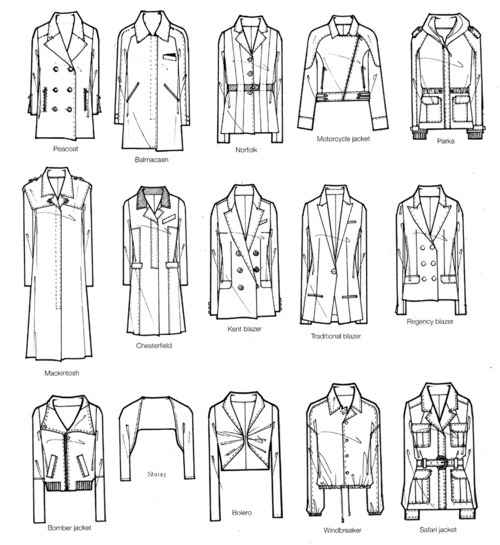
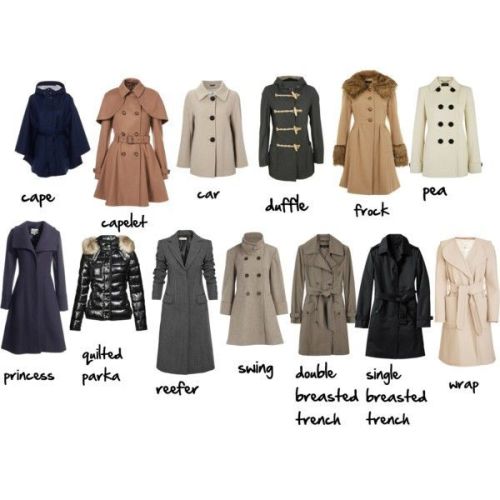
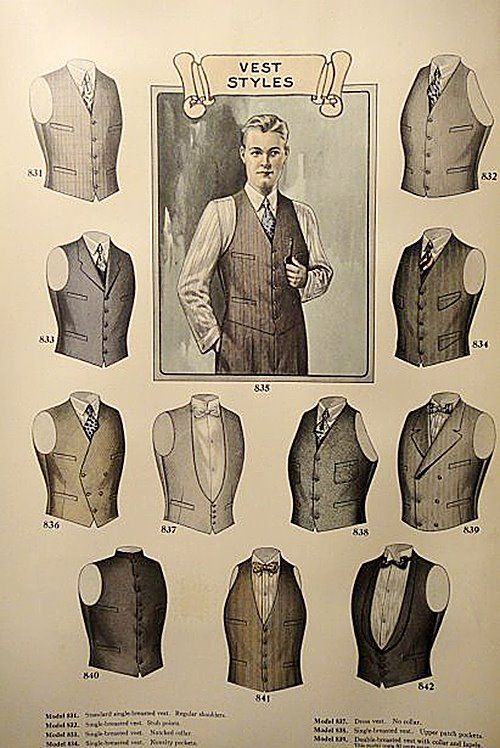
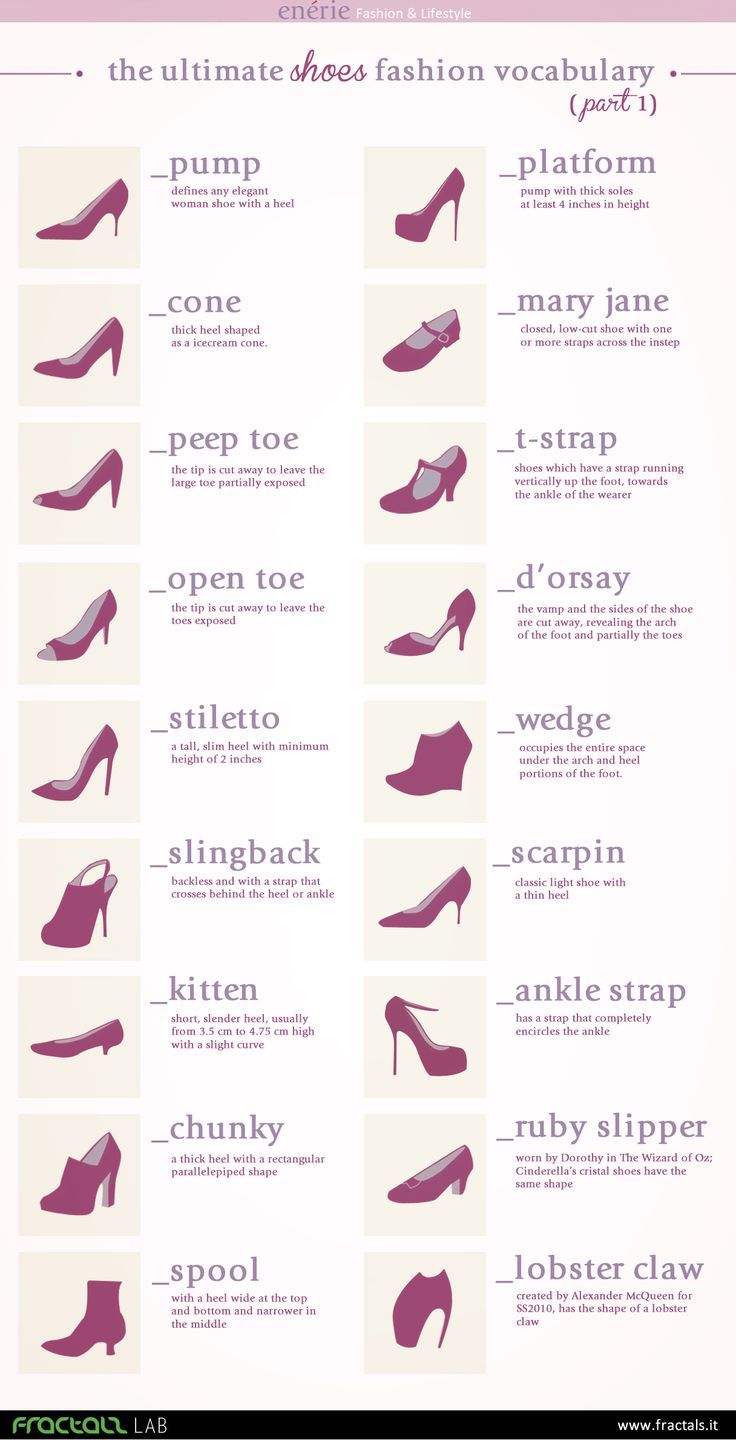


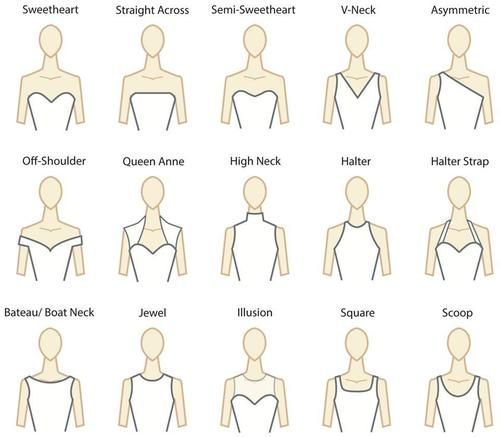
My collection of clothing references for writing.
